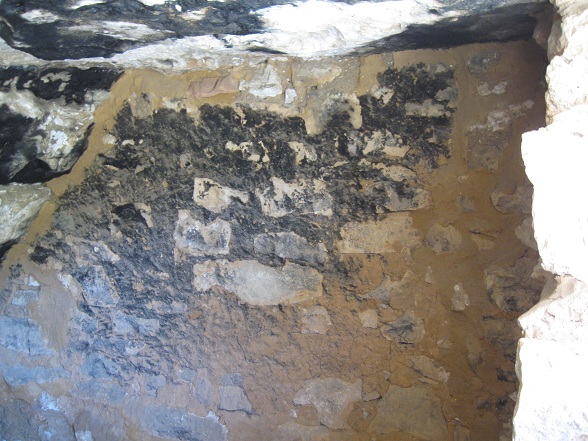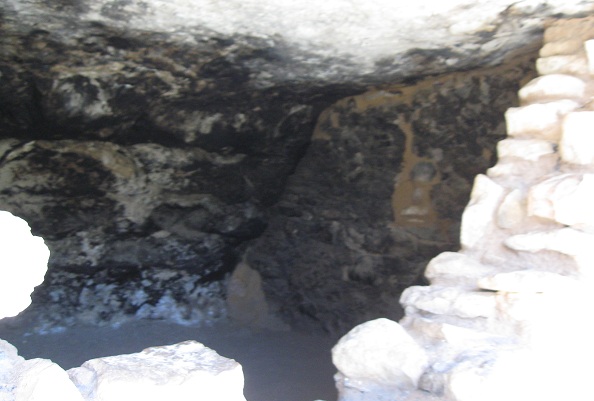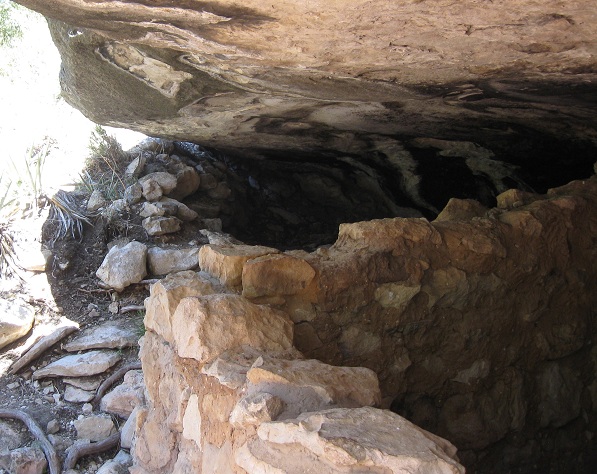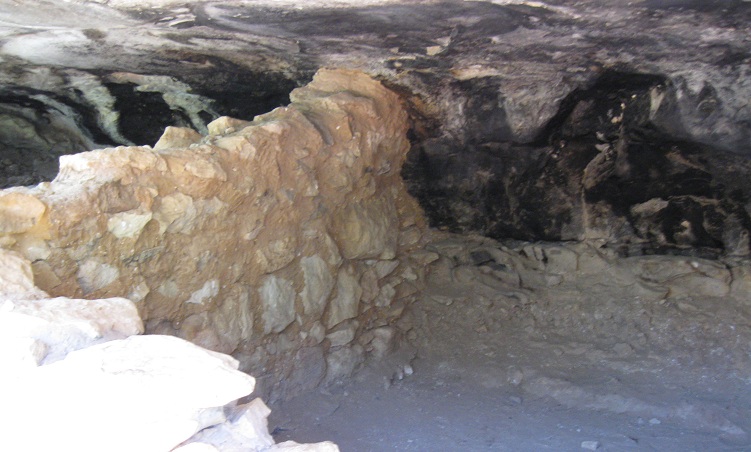Arizona - Walnut Canyon - left trail
Walnut Canyon (left side of trail)




Starting off with some scenery, and looking down toward the bottom of the canyon (mostly invisible, except for what you saw on the front page). The weathering of stream on rock is more than sufficiently evident.



You can just about see all the way down from here. You can also just about see some snow remaining on the shady side of the canyon, even in 80 degree weather in late April in the desert.



Looking west and south a little farther along the trail.

One final view eastward before we get to the good stuff.


The first glimpses of human activity along the face of the canyon, where rock has been chipped away to create shelter. The Sinagua people (aptly named for "lack of water" in Spanish, living in a desert and all) constructed these dwellings about 900 years ago and lived here for 150 years before mysteriously leaving. Because they used stone to construct their walls (quite possibly quarried from their living rooms) and because of the protection from the elements afforded by the central rock spire, the ruins have been well preserved and connected by the loop trail.


This hollowed-out space didn't survive very well, with wall-sized rocks strewn everywhere. There are no ruins on the north side of the canyon, where the trail enters the loop, and few on the east side, suggesting that the elements were somewhat harsher in those directions.




The first full dwelling and the view down from there, with undeniable traces of snow on the rocks. Most of the dwellings are missing their front faces, which again may be due to the elements.







Walking west to the next dwelling, much better preserved. I imagine the Sinagua might have lit fires at night, particularly in winter, because otherwise there's nothing but bedtime to be had in this room once it's dark. The blackened walls would further damp the light and would bring some heat into the beshadowed rooms, though they seem open enough to have matched ambient temperature.







In the next dwelling, the second and third photos were taken with flash to bring out the features. The first and fourth photos were taken without, to give you a picture of daily life in the 1100s. All of the floors are now fairly fine sand, whether drifting down from the ceiling and walls or blown in from the rock face, but presumably were swept clean to a rock floor centuries ago.







The next couple of dwellings and the view out. People pay millions for views like this, but the accommodations leave something to be desired by modern standards.






The next set of dwellings. It seems that full walls were built to separate families, while each dwelling may have had 2 or 3 rooms separated by low walls with space to the overhanging ceiling. That's just conjecture, but when you have some dwellings clearly limited to one room and other locations with multiple low walls between full walls, it seems that there is more than an arbitrary division. It's also possible that multi-roomed dwellings belonged to more important people, but I would expect that larger rooms would be a better reward.
See the right side of the trail
Back to Walnut Canyon main page
Back to Arizona Non-Roads
Back to Non-Roads main page












































